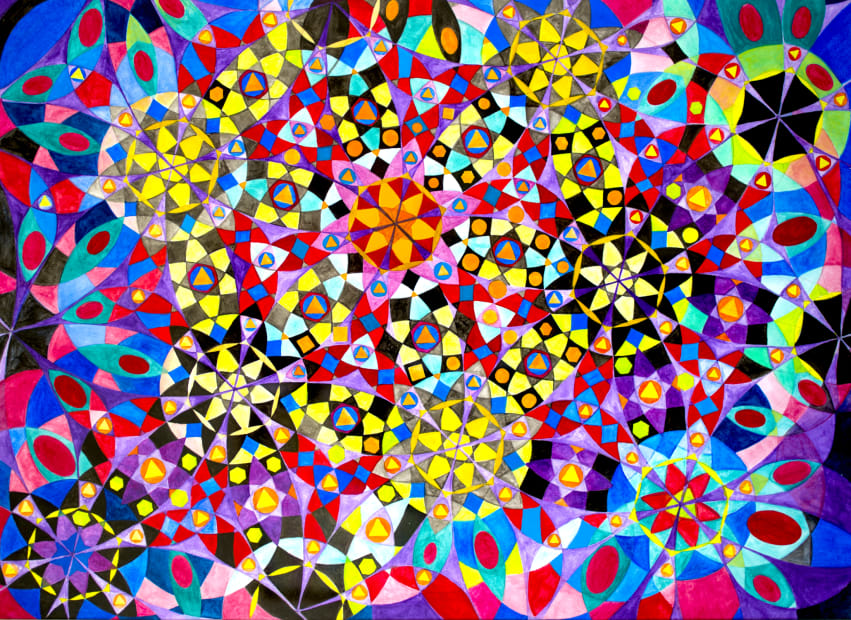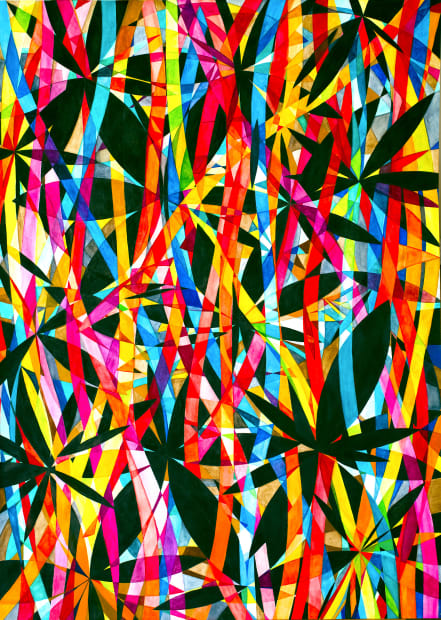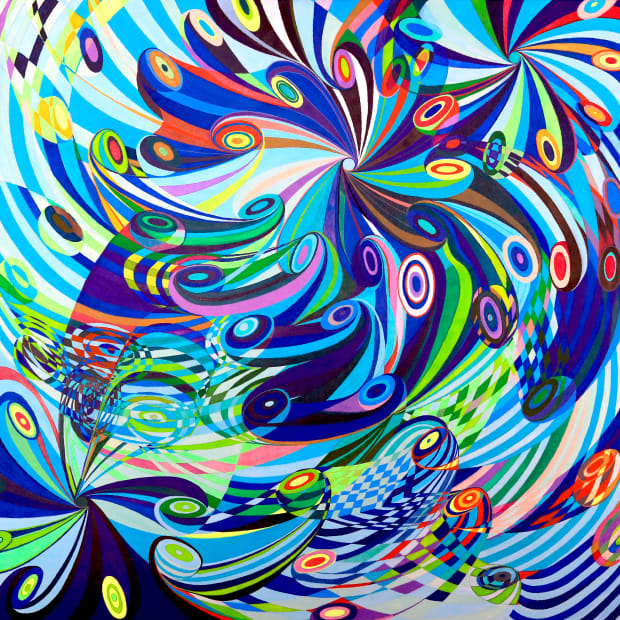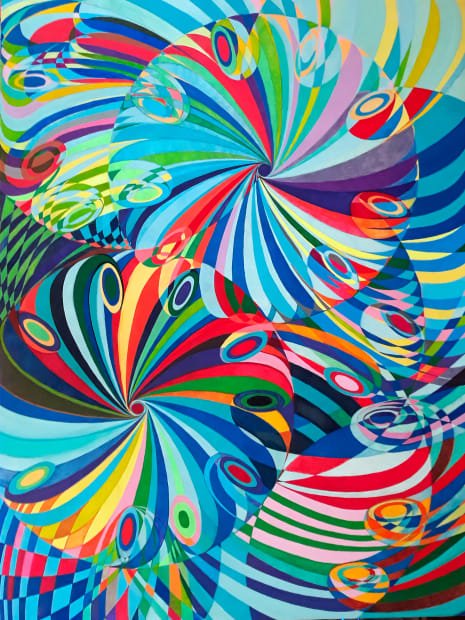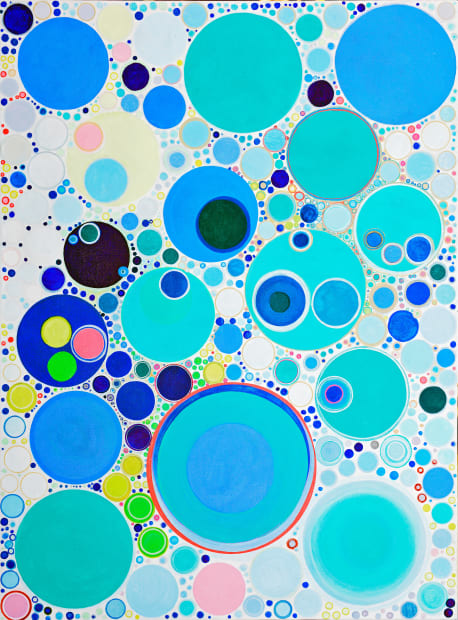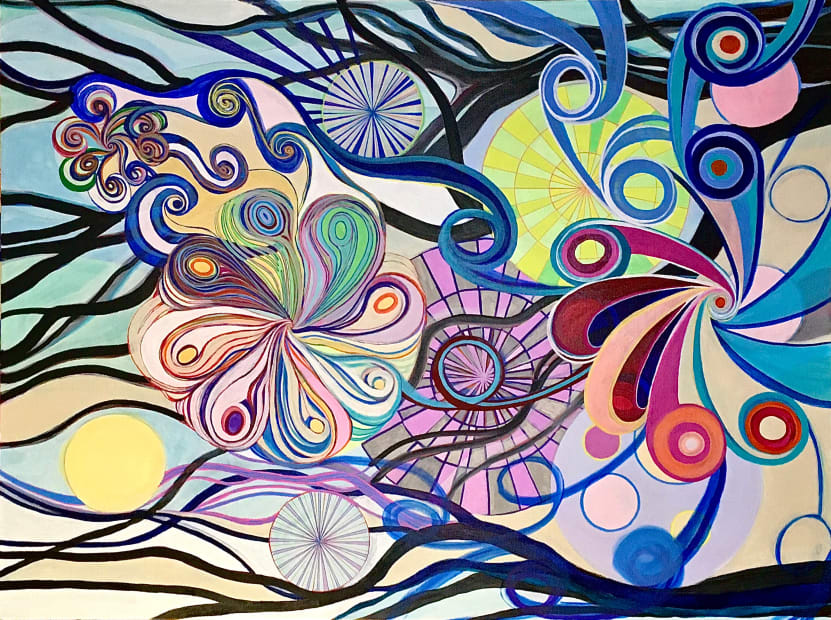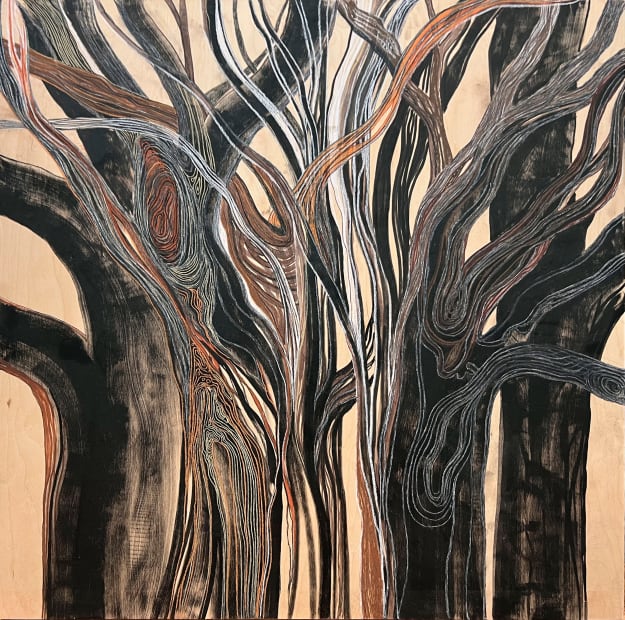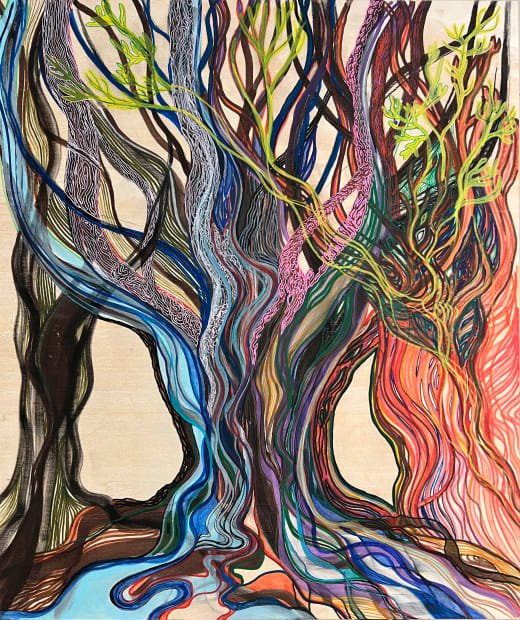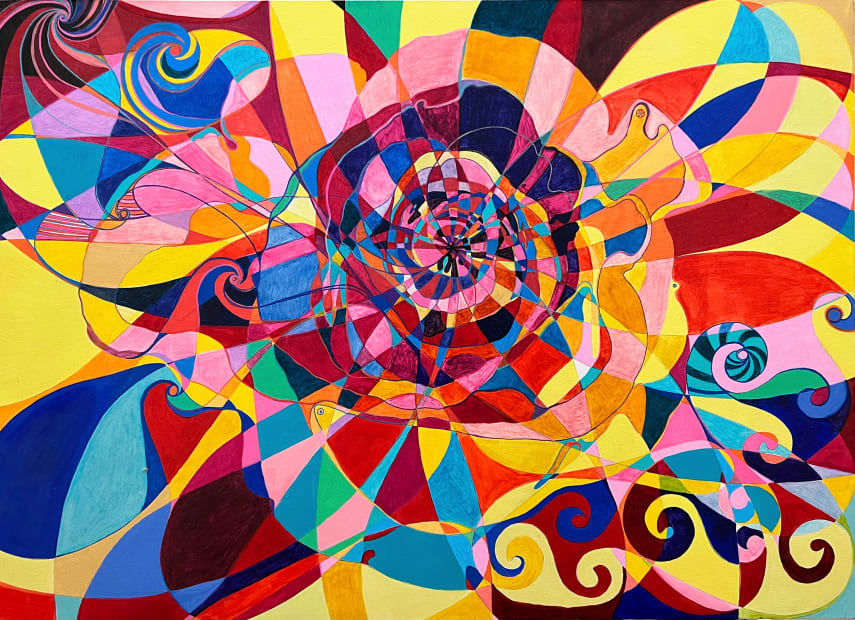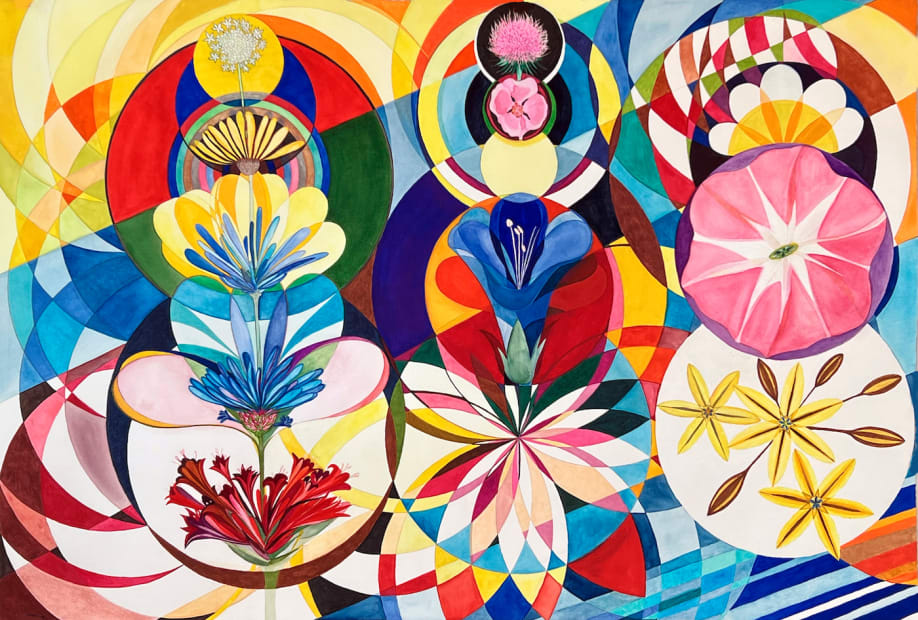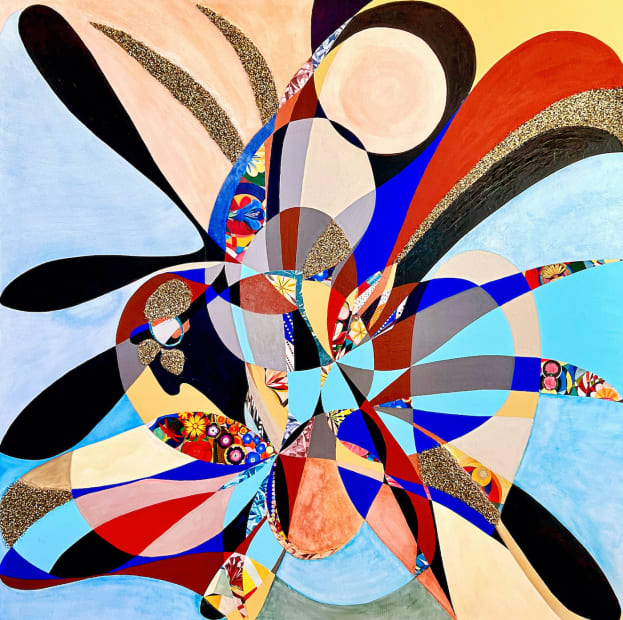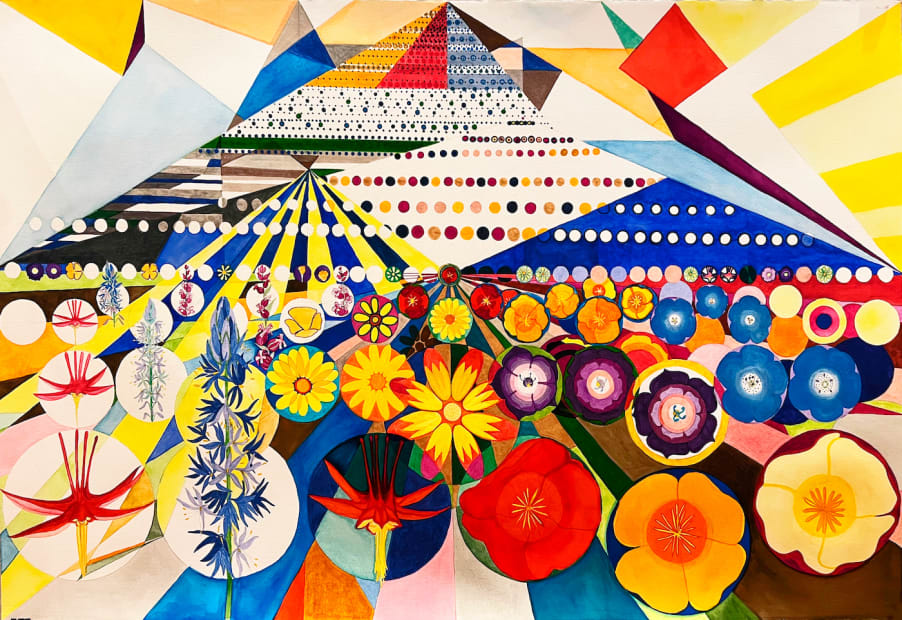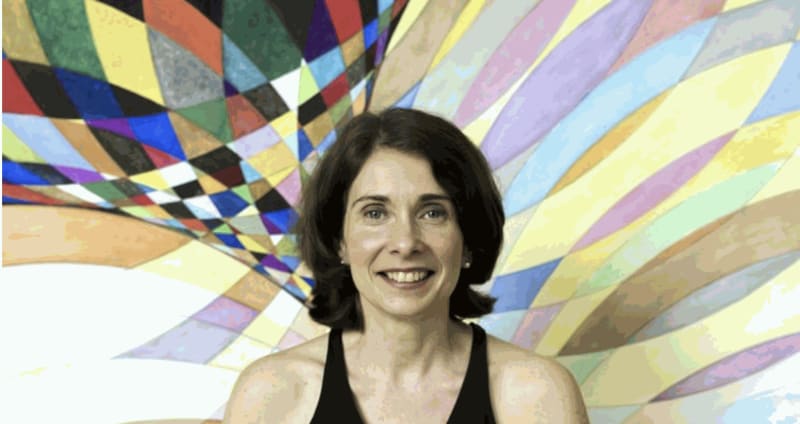Lorien Suarez-Kanerva
"...Importantly, Suárez-Kanerva has learned to allow a vision to take hold by attending in an uninhibited way through consciousness to what lies beneath normal everyday awareness. That vision integrates the materialistic and the immaterial while inferring the presence of metaphysical or transcendent truths that embody her actual physical artworks. Such impactful metanarratives suggest the presencing of worlds beyond language."
--Dominique Nahas
Suárez-Kanerva’s visionary geometric artworks have an auratic hand-made quality that revels in inducing a variety of facture for the viewer. This is the combination of brushworks, marks, material and the texture of the surface. Much of the fascination and excitement that accrues to the artist’s manual media comes from what the viewer can observe at close range which in turn induces a range of sensations within the viewer, including delight, wonderment and mystery.
Lorien Suárez-Kanerva nimbly applies the language of geometry to compose her layered abstractions. The visual compositions are a result of a constructive, systematized pictorial language allowing the planning of these compo- sitions to take form and shape following a pre determinable organizational matrix. This organizational, structural level inherent in a geometric matrix affords visual coherence and excitement to the artist’s dynamic narratives as such. But for Lorien Suárez-Kanerva geometry is part of a perceptual matrix. Geometry applied as a language of form allows the artist to use it as a language of content. Over the years Suárez Kanerva has masterfully structured (operationally and pictorially) the creation of internally coherent compositions that are imbued on some levels with clarity and precision. Yet on other levels such compositions and the narratives they suggestively provoke also defy easy reading, resisting interpretation and thus heightening the vitality level of her studio practice. One of the unde- niable attributes of Suárez-Kanerva’s studio practice is that she has managed to introject into each of her carefully calibrated compositions a pervading sense of intense, ecstatic unknowingness. The perfume of radiant enigma permeates her aesthetic vision which is imbued with vitality.
Such vitality stems from the artist’s capability, honed after years of experience, of keeping her process alive to spontaneousness and improvisation. Lorien Suárez- Kanerva’s imaginative and creative impulses have been inten- sified by drawing upon what she knows, what she has experienced, physically and sensorially as well as cognitively through her research and study. But, importantly, the artist has learned to allow a vision to take hold by attending in an uninhibited way through consciousness to what lies beneath normal everyday awareness. That vision integrates the materialistic and the immaterial while inferring the presence of metaphysical or transcendent truths that embody her actual physical artworks. Such impactful metanarratives suggest the presencing of worlds beyond language. They point to a primordial, ahistorical awareness that Maurice Merleau-Ponty alludes to in his Phenomenology of Perception when he states: “To return to things themselves is to return to that world which precedes knowledge of which knowledge always speaks.”
Lorien Suárez-Kanerva was born in 1973 in Berkeley, California of mixed heritage, Venezuelan and American. She and her younger brother had a childhood where her love of art and of nature were constants. She settled near Caracas in San Antonio de los Altos where she attended La Escuela Comunitaria, a private Spanish-speaking school. At the age of thirteen Lorien and her family (her father obtained a doctorate in Electrical Engineering and Computer Science from Berkeley, her mother was a certified elementary school teacher) moved the United States, to Oregon, in 1986. Suárez-Kanerva received her BA from UC-Berkeley focusing on Middle Eastern and Latin American histories. Her graduate degree and post-graduate work in European Constitutional Law, diplomatic relations and international business were pursued in Leuven, Belgium (Katholieke Universiteit) and in Spain (Universidad de Salamanca and ESADE in Barcelona). Since 2003, the artist has had solo exhibitions in numerous galleries and has participated in group shows at profit and nonprofit venues such as Gallery 128, Lichtundfire Gallery and Anita Shapolsky Gallery, in NYC; La Sierra University Branstater Gallery; Riverside Art Museum, San Diego Art institute, Oceanside Museum of Art, in CA; Florida Atlantic University, Boca Raton Museum of Art, Art Basel Scope Miami, Curator’s Voice Art Projects, in Miami, 57th Venice Biennale, Palazzo Bembo, 2017-22.
The historical influences that informed Suarez-Kanerva’s aesthetic vision include Islamic art and architecture, East Indian mandalas, the Rose windows of Paris’s Notre Dame Cathedral, geometric and organic formalism, constructivism, and the aesthetic movements advanced by the Bauhaus, the Abstract Creation and Blue Rider groups, the Latin American Geometric Abstraction artists of the early 20th century. Artists Sonia and Robert Delaunay, August Herbin, Carlos Cruz Diez, Jesus Raphael Soto, Joseph Stella, Stanton McDonald-Wright, Archile Gorky, M.C. Escher, Johanesss Itten, Victor Vasarely, Georgiana Houghton, Hilma af Klint, Emma Kunz, Charles Arnoldi, and Roland Reiss are key progenitor-figures for her. The artist draws her inspiration from a range of reading sources such as Carl Jung, Teillard de Chardin, Namgyal Rinpoche, Walt Whitman, Henry David Thoreau, William Woodsworth, Lawrence Cahoone’s, The Orders of Nature, and Jane Bennett’s, Thoreau’s Nature, and Philip Ball’s, Patterns in Nature and Bright Earth.
